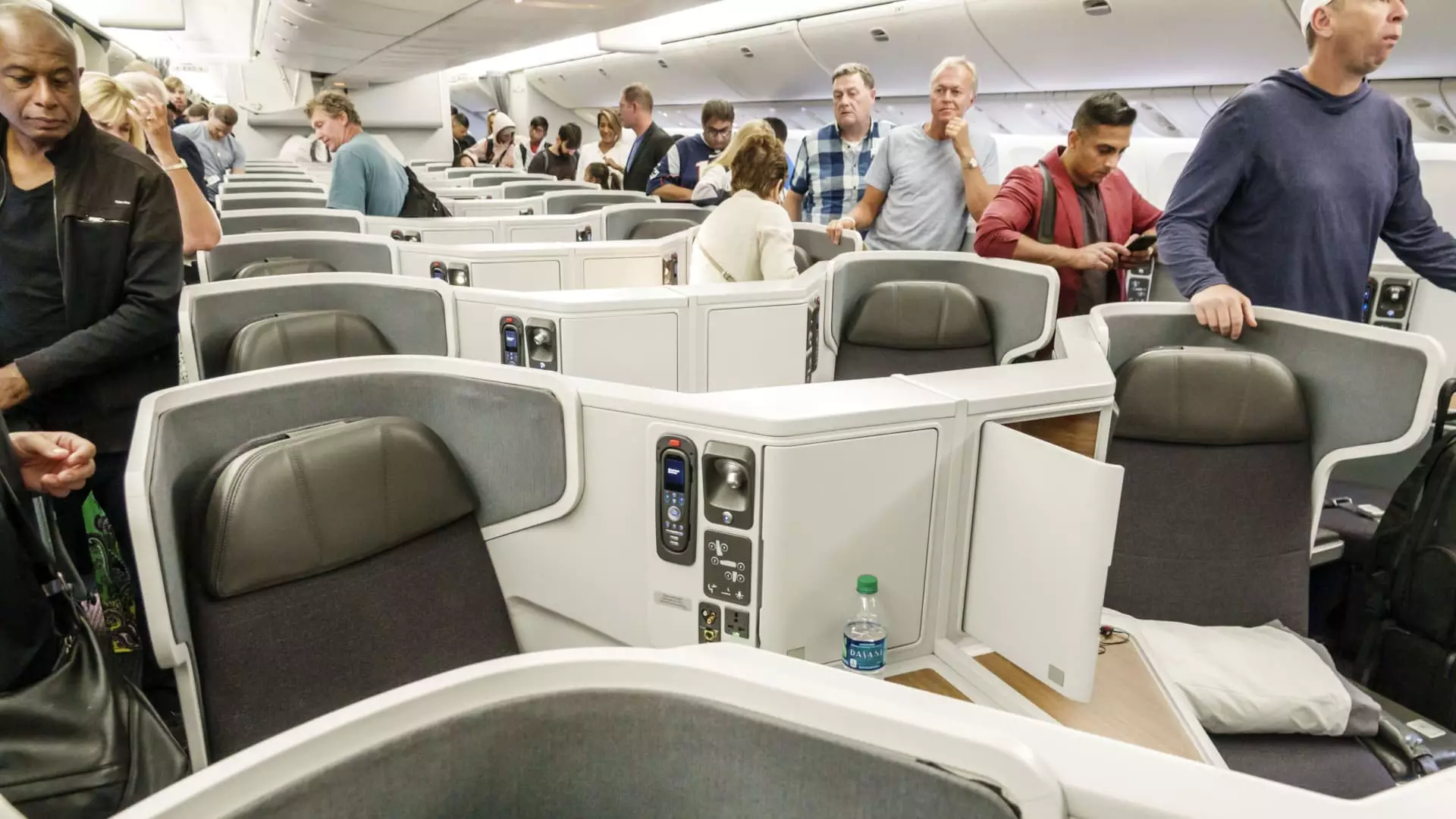The landscape of air travel has undergone a notable transformation since the pandemic, reflected in shifting passenger priorities and airline strategies. Travelers are no longer satisfied with merely purchasing cheap seats; they are increasingly willing to invest in more spacious accommodations. As we analyze this inevitable evolution, it is imperative to understand the factors influencing this behavior, the response of airlines, and the implications for future travel experiences.
Travelers’ Changing Priorities
The pandemic served as a catalyst for many travelers to reassess what they value when flying. With social distancing and the need for more personal space in mind, a significant segment of the flying public has opted for premium seating options. This shift is evident in the difficulty experienced by frequent flyers in snagging coveted free upgrades, as more passengers embrace the idea of paying for enhanced comfort. The increase in the ranks of elite status frequent flyers also means greater competition for limited premium seats. As more travelers enter the fray, airlines are observing a profound change in demand dynamics, reinforcing the need for shifts in pricing and seating strategies.
Airlines are capitalizing on this growing demand, with reports indicating an optimistic outlook for capacity in the upcoming year. According to aviation data firm Cirium, U.S. airlines expect a slight capacity uptick of about 1% in the first quarter. This is a significant shift from pre-pandemic routing, where many airlines were scaling back to mitigate losses. Delta Air Lines President Glen Hauenstein noted that even during typically low-demand seasons, such as winter, the airline is experiencing record revenues, particularly on transatlantic routes. Such indicators point toward an industry that is adapting quickly to the evolving market, potentially setting the stage for even more competitive fare structures and seating arrangements.
Price Disparities Between Class Limits Demand
The pricing structure between economy and premium seating continues to be markedly different, subject to variables such as route distance, demand fluctuations, and time of year. For instance, a round-trip ticket on United Airlines can range from $347 in standard economy to a staggering $1,791 in their Polaris business class. These variations reflect the complex market dynamics where airlines are tasked not only with filling seats but also maximizing revenue from each available square inch of their aircraft. As airlines strive to improve profitability, revenue derived from premium seats has become increasingly critical, leading them to rethink their loyalty programs and elite status criteria.
Evolving Loyalty Programs and Elite Status
The evolution of airline loyalty programs has been particularly noteworthy. Traditionally, frequent flyer programs rewarded miles flown, but airlines have shifted their focus toward rewarding spending. This approach has made it more challenging for travelers to achieve elite status. For instance, United Airlines recently adjusted its spending requirements, while American Airlines opted to maintain theirs, highlighting the competitive pressures they face in retaining their loyal customer base. This adjustment is significant in an industry where the battle for high-spending customers is fiercer than ever.
Innovations in Premium Cabin Offerings
The airlines’ responses to increasing demand for premium experiences are apparent in their efforts to innovate and expand first-class offerings. From Delta’s pivot to pricing that encourages more passengers to buy into premium sections, to JetBlue introducing a “junior Mint” class aimed at casual travelers seeking moderate upgrades, these initiatives highlight an industry-wide movement towards enhancing the passenger experience. Furthermore, Alaska Airlines is retrofitting older aircraft with premium seating in anticipation of future demand, showing that airlines also recognize the long-term growth potential for premium cabins.
Challenges in Competitive Strategies
Despite the influx of initiatives to optimize premium seating availability, airlines face challenges in maintaining a balance between supply and revenue. The ongoing adjustments are not merely about upgrading passenger experience; they also weigh heavily on operational costs. The introduction of premium offerings requires significant investment in crew training, enhanced catering services, and upgraded facilities. For many airlines, like Southwest Airlines, the decision to remain primarily in the economy space while introducing extra-legroom seats reflects a calculated approach to minimize financial risk amid shifting consumer preferences.
As airlines adapt to the changing demands of their customers, it is clear that the landscape of air travel will continue to evolve. With a younger generation prioritizing comfort alongside price, airlines must remain vigilant in understanding and anticipating the needs of their clientele. The ongoing shift towards premium offerings signals a long-term change in the industry with lasting implications for how airlines position themselves in a highly competitive market. Ultimately, the journey toward an enhanced flying experience is just beginning, and the industry’s readiness to embrace this transformation will dictate its future success.

